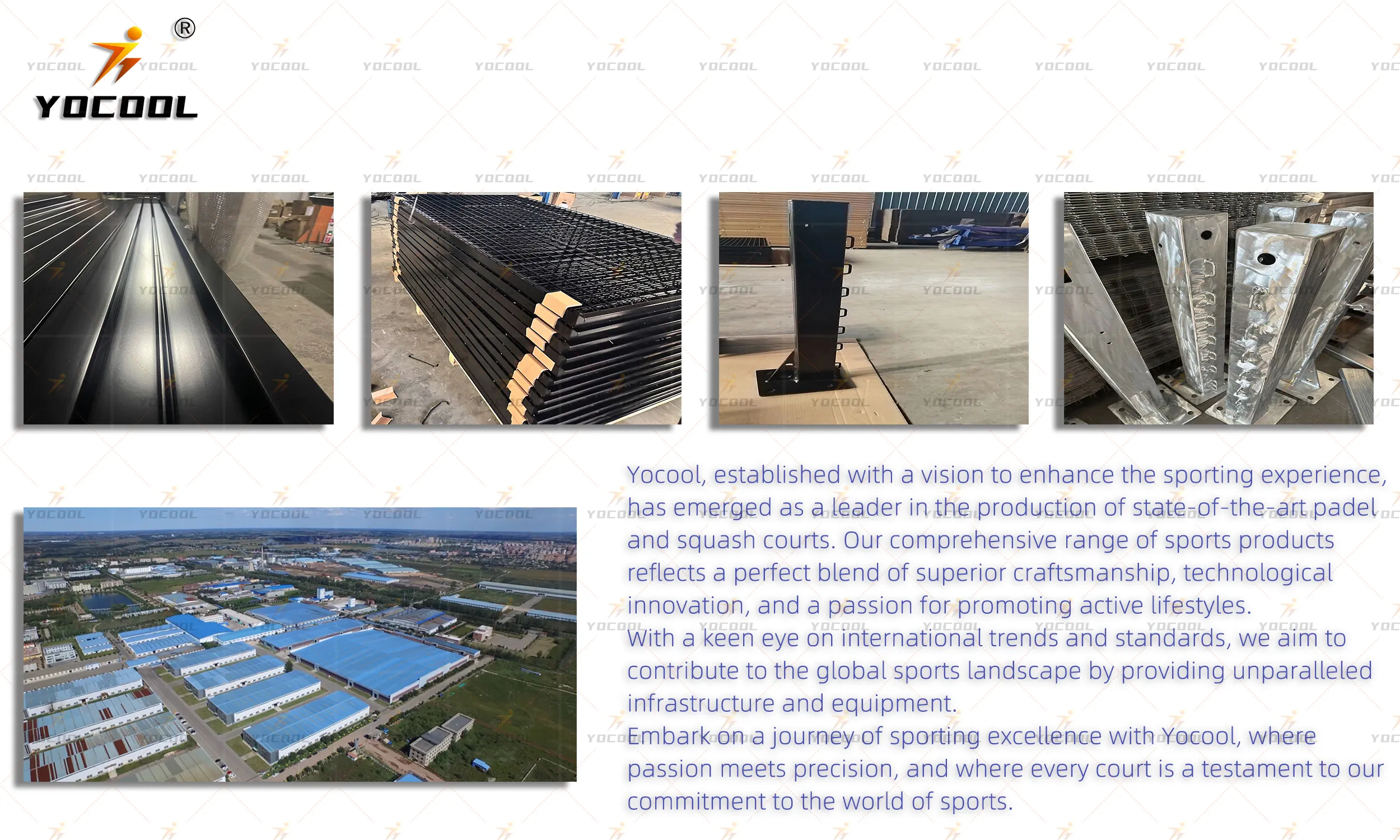

The Evolution of Padel Court Roof Manufacturing
As the popularity of padel, a racquet sport that originates from Mexico, continues to soar worldwide, the demand for quality padel courts has surged. Among the many elements that make up a padel court, the roof stands out as a critical component—serving not only aesthetic purposes but also functional benefits. In this article, we will explore the evolution of padel court roof manufacturing, the materials used, and the trends shaping the future of this essential feature in padel courts.
The Need for Padel Court Roofs
Padel courts are typically constructed outdoors, making them susceptible to varying weather conditions. Rain, snow, and excessive sunlight can disrupt games and reduce the lifespan of these courts. A well-designed roof protects players and spectators alike, enhancing the overall experience and allowing for games to continue regardless of weather conditions. Moreover, a roof can also control temperature and humidity levels within the court environment, essential for maintaining optimal playing conditions.
Historical Context
The concept of covering sports courts is not new; various sports have incorporated roofs for decades. However, the specific need for padel court roofs arose as the sport gained traction, especially in Europe and Latin America. Initially, many courts were designed without roofs, leading to challenges in consistent match play. Players and court owners quickly recognized the necessity for a reliable roofing solution, prompting manufacturers to innovate.
Materials in Roof Manufacturing
Today, the roofs of padel courts are produced from a diverse array of materials, each bringing its own set of benefits
. The most common materials include1. Polycarbonate This lightweight, durable plastic is highly favored for its transparency, allowing natural light to illuminate the court. Polycarbonate roofs are also UV-resistant, which helps protect players from sun exposure while preventing the roof itself from degrading.
2. Metal Aluminum and steel are often used for more rigid structures. Metal roofs can withstand heavy snow loads and high winds, making them ideal for harsher climates. They often come with protective coatings to prevent rust and maintain their aesthetic appeal.

3. Fabric Tensioned fabric roofs provide a unique solution where traditional rigid materials might not be suitable. These fabrics are typically waterproof and allow for significant design flexibility. Moreover, they can be aesthetically pleasing, adding a modern touch to the court’s appearance.
4. Glass Some high-end courts utilize glass roofing, offering a luxurious and open feel. Glass roofs provide excellent visibility and attract natural light, but they require a robust structural design to ensure safety.
Design Innovations
Manufacturers today are not only focused on the functionality of padel court roofs but also on their design. A growing trend is the use of modular designs that allow for quicker installation and adjustments according to specific site requirements. Customization has also become popular, with courts incorporating branding elements or even artistic motifs.
Additionally, advancements in technology have introduced smart roofing solutions that can adapt to environmental conditions. For instance, some roofs can automatically open or close depending on humidity levels or precipitation. This is a game changer for maintaining ideal playing conditions, reducing the need for manual adjustments and ensuring that players’ needs are prioritized.
Sustainability in Roofing
As concerns over environmental sustainability grow, padel court roof manufacturers are increasingly considering eco-friendly materials and construction methods. Innovations such as solar panel installations on roofs not only provide energy but also create a self-sustaining court environment. Furthermore, manufacturers are exploring recyclable materials to reduce waste and promote sustainability in sports infrastructure.
Conclusion
The evolution of padel court roof manufacturing reflects the broader trends in sports and recreation. As the sport continues to grow, so too will the innovations surrounding court construction and maintenance. Roofs play a pivotal role in enhancing the functionality, safety, and aesthetics of padel courts, ensuring that players can enjoy the game year-round. With ongoing advancements in materials and design, the future of padel court roofs is bright, promising a dynamic blend of utility, style, and sustainability. Whether for recreational use or competitive play, investing in quality roofing solutions will remain a key consideration for padel court owners and manufacturers alike.
High-Performance Industrial Flooring Solutions China Paddle Tennis Court for Sale
High-Performance Industrial Flooring Solutions Durable & Cost-Effective
Homogeneous Transparent Floor – Durable & Stylish Rubber Floor Solutions
Premium Homogeneous Transparent Floor for Durable & Stylish Spaces Rubber Floor Solutions
Premium Sports Floor Solutions Durable PVC Sports Floor & Rubber Floor for Gyms
Durable Rubber Composite Floor Premium Rubber Floor & Mats Solutions